How to Install New Windows in Your House
How to Install a Window
Two easy ways to pull out old windows and put in new wood or vinyl replacement inserts or double-hung sash replacement kits.
![]() Time
Time
A full day
![]() Complexity
Complexity
Intermediate
![]() Cost
Cost
$101–250
Introduction
Ready to replace your drafty old windows with new energy-efficient units? We'll show you the two easiest ways to pull out old windows and put new ones in—and you don't have to tear off the interior moldings or disturb exterior trim and siding to do it.
Tools Required
Materials Required
- Caulk
- Fiberglass insulation
- Minimal expanding foam
- Shims
How to Replace Windows: Double-Hung
In this article, we'll show you step by step how to remove the old sash from double-hung windows and mount either a new sash kit or a wood or vinyl replacement insert inside your existing window jamb. Even a beginner can do it. Read on to learn how to replace windows.
Both the sash replacement kit and the wood or vinyl replacement insert mount inside your existing window jamb, in the place that was occupied by the old sash. They both fit in the space between the outside stop, called the blind stop, and the removable interior stop (see Fig. A). The sash replacement kit is designed to replace the sash in double-hung windows only. Wood or vinyl replacement inserts, on the other hand, are self-contained units with their own jamb and sash, and can, therefore, be slid into almost any type of window jamb. They are available as double-hung, sliding or casement-style windows.
Either type of replacement window must be installed in a solid, rot-free jamb. Inspect your old window frame carefully for signs of water damage. Pay particular attention to the sill. Probe with a screwdriver to uncover hidden soft spots. Normal exposure to rain and snow often causes the exposed parts of poorly maintained windowsills or the lower sections of the exterior trim to rot. An experienced carpenter can usually repair these areas with sections of new wood or you can use an epoxy repair system. Rot along the top or interior parts of windows, including the window jamb, is more difficult to repair and often signals a bigger problem. Don't mess with repairs when installing windows. Plan on tearing out the entire window and installing a new one.
Project step-by-step (25)
Step 1
Window parts and how to replace a window frame

Figure A will help you to understand the parts of a window. Measure very carefully before you place an order, no matter what type you install. There's nothing worse than discovering that your non-returnable, custom-sized window doesn't fit.
If your house was built before about 1940, you'll likely have double-hung windows with sash weights and cords like the ones shown in this article. Newer double-hung windows may have springs or jamb liners instead, but once these are removed, the replacing windows in old house process are the same.
Step 2
How to Measure for Replacement Windows
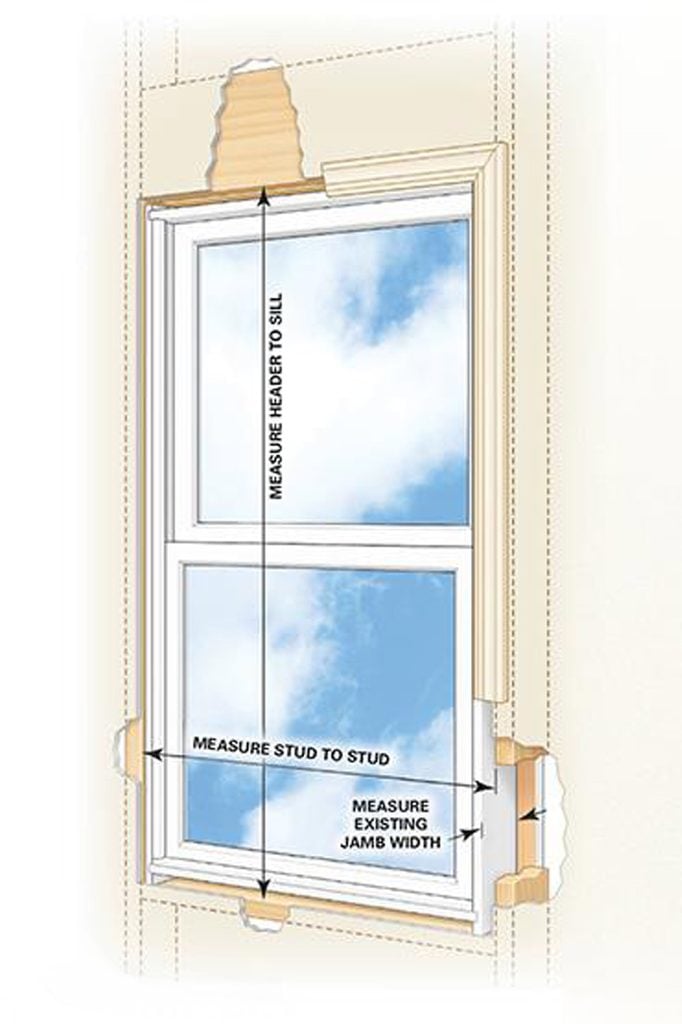
You can replace windows in just a few hours each, but first, you have to get accurate measurements to order the new ones. It's easy to measure the rough opening width and height once you remove the wood trim. But many DIYers make the mistake of not getting a precise depth measurement. If the window frame doesn't sit flush with the wall, you'll have to plane and sand the window frame or thicken the jamb depth with furring strips. That turns a relatively easy job into an all-day affair. So take your time and use a ruler to get the right depth.
Measure the width between the side jambs at the top, middle and bottom and record the smallest measurement. Measure all the way to the jamb, not the blind stop or parting stop (see Fig. A). Now measure the height from the top jamb to the sill (see Fig. A). Measure both sides and the middle and record the smallest measurement. Finally, determine the sill angle and specify this when you order a sash replacement kit to make sure the jamb liners fit tight to the sill. This step isn't necessary for ordering wood or vinyl replacement inserts.
Your objective is to buy a window that fits within that opening. If you don't, you'll have to make the opening smaller, or worse, enlarge the opening to fit the new window. And that also means reworking all the exterior trim, siding and interior wall surfaces. Take all of these numbers with you when you go shopping, and know that you can custom-order odd sizes if no stock sizes fit your opening.
Sign Up For Our Newsletter
Complete DIY projects like a pro! Sign up for our newsletter!
Do It Right, Do It Yourself!
![]()
Step 3
Replacement Inserts or Sash Replacement Kits?
Both the sash replacement kit and the wood or vinyl replacement insert mount inside your existing window jamb, in the place that was occupied by the old sash. They both fit in the space between the outside stop, called the blind stop, and the removable interior stop (see Fig. A). The sash replacement kit is designed to replace the sash in double-hung windows only. Wood or vinyl replacement inserts, on the other hand, are self-contained units with their own jamb and sash, and can, therefore, be slid into almost any type of window jamb. They are available as double-hung, sliding or casement-style windows.
Step 4
Replacement Window Insert

Option 1: Wood or vinyl replacement inserts
For a maintenance-free window that doesn't require any painting or staining, consider vinyl replacement windows. Replacement window inserts tilt into the existing frame and are pre-hung in a frame. Some companies even make a simulated wood grain interior. Since wood or vinyl replacement inserts have their own jamb, they can be installed in window jambs that are slightly out of square. Ask your window dealer for help measuring, though, since you'll have to downsize the window slightly to fit.
Shopping for replacement windows is a little trickier than buying sash kits because the quality of the windows varies dramatically and many are available only to contractors. Make sure to inspect and operate an actual working model of the window before you order. Look closely at details like the locking system, weatherstripping, and sash and frame joints. Then consider the overall appearance. Some windows, like ours, have narrow vinyl sash parts that allow more light and a better view than windows with wide sash frames.
Step 5
Sash Replacement Kit
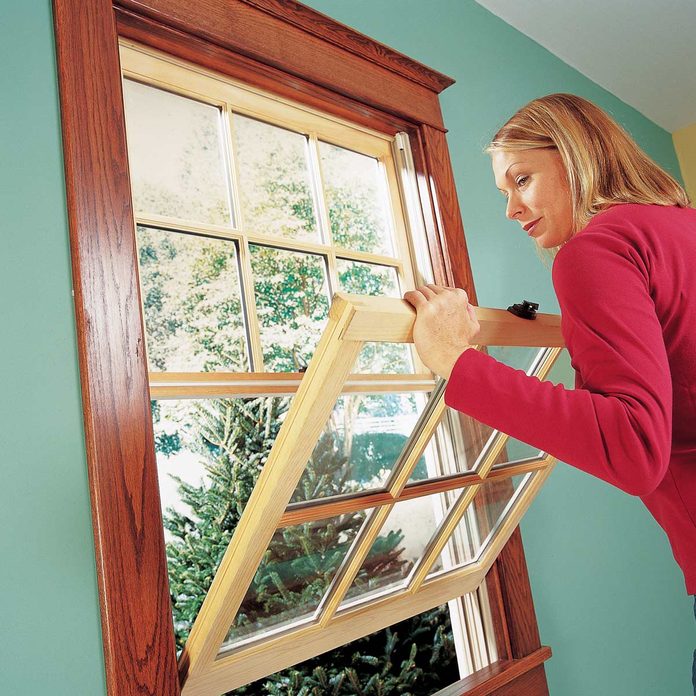
Option 2: Double-hung sash replacement kits
If you want to retain the authentic wood look of your old double-hung windows, sash replacement kits are the best option. Sash replacement kits have five parts and fit into the existing window. You can order the sashes with grilles to match the rest of the windows in your house and paint or stain the wood. (You can choose grilles that either snap-in or are glued to the glass.) But your old window jamb must be square and rot-free. Measure diagonally. If the diagonal measurements differ by more than 1/2 in., the new sash won't seal properly and you should replace the window or use a vinyl replacement window instead.
Double-hung sash replacement kits consist of two new wood window sashes, two vinyl jamb liners and installation hardware. Features like energy-efficient low-E glass, simulated divided lites and maintenance-free exterior cladding are available for an extra cost. Contact the manufacturer for more information about options and to find out where to order windows in your area.
Step 6
Installing Wood or Vinyl Replacement Inserts
Caution! Houses built before 1978 may contain lead paint. Before disturbing any surface, get a lab analysis of paint chips from it. Contact your public health department for information on how to collect samples and where to send them. Do-it-yourself lead testing kits are also available at home centers and hardware stores.
Step 7
Gently Pry off the Interior Stops

Start your replacement insert installation by removing the interior stop, sash and parting stop. Pry against a stiff putty knife to protect the wood. To minimize paint chipping on painted windows, score the joint between the window frame and stop with a utility knife before prying off the stop. Pull the nails through the backside of the stop with a nail nipper or pliers.
The parting stop is usually caked with paint and difficult to remove. Use pliers to break out the lower section. If the upper sash is stuck, pry or break out the upper section of parting stop with a chisel. If your windows have spring balances or metal jamb liners rather than sash weights like ours, start by removing the interior stops. Then look for the screws or nails that secure the sash hardware and remove them. The goal is to remove all hardware back to the blind stops.
Step 8
Test the Fit
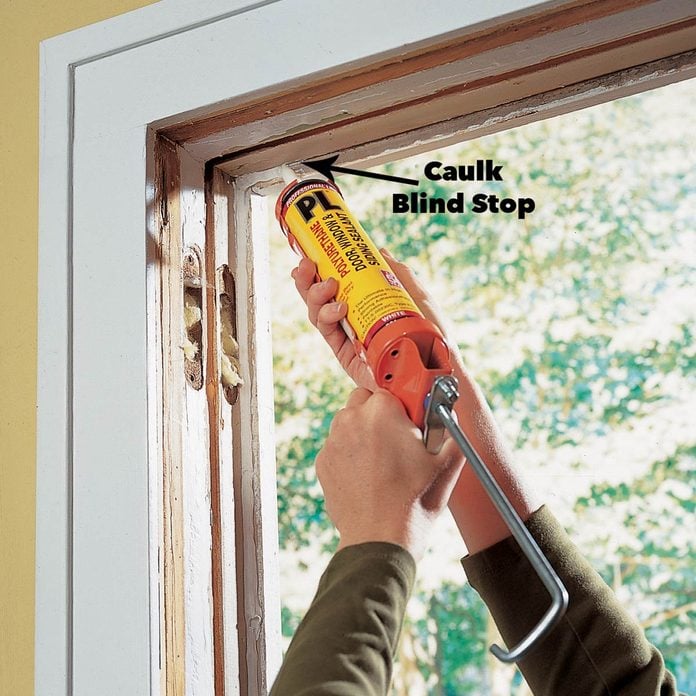
Slip the new window insert into place to make sure it fits. You don't have to worry about dinging up the jamb and sill because they'll be covered. If your window has a sash weight cavity, stuff it with insulation. Then remove the window insert and lay a bead of polyurethane window and door caulk along the inside of the blind stop and the backside of the window stool.
Step 9
Place the Window

Rest the bottom of the replacement window on the sill and tilt the window into place against the blind stop. If your window includes a head expander, position it over the top of the jamb first. Press the window tight against the caulked blind stop.
Step 10
Fasten the Window

Your wood or vinyl replacement insert will be slightly smaller than the window jamb opening to allow for shimming. The key to a window that operates smoothly and seals properly is getting the frame perfectly square and the sides straight. Loosely fasten the window into the frame with partially driven screws in the lower left and upper right corners. Don't be afraid to remove the screws and readjust the window in the opening if necessary.
Step 11
Check for Square

Close and lock the sash. Measure diagonally across the new window. Slide shims behind the screw holes in the four corners and adjust them until the diagonal measurements from opposite corners are equal. Drive screws through the upper left and lower right screw holes..
Step 12
Plumb the Window
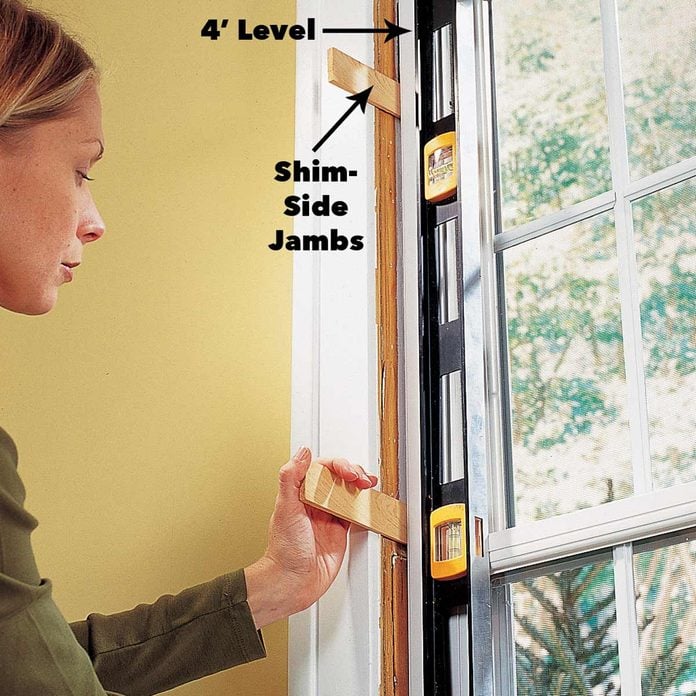
In addition to checking the window by measuring the diagonals, open and close the sashes to make sure the tops and bottoms are parallel with the sill and top jamb and that the top and bottom sashes are parallel to each other where they meet in the middle. Hold a level against the side jamb and slide wood shims behind each remaining screw hole until the side jamb of the window is straight. Snug up all of the screws and check to make sure the sashes slide easily and align perfectly where they meet in the middle. Be careful; overtightening the screws could warp the vinyl jamb. Cut off the shims with a sharp utility knife.
Step 13
Reinstall the Trim
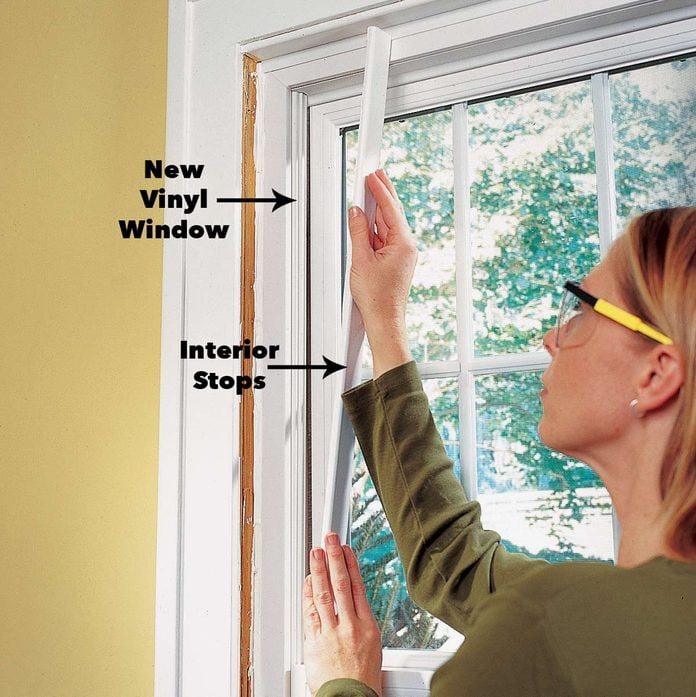
Replace the interior stops and nail them in place with 4d finish nails.
Step 14
Insulate
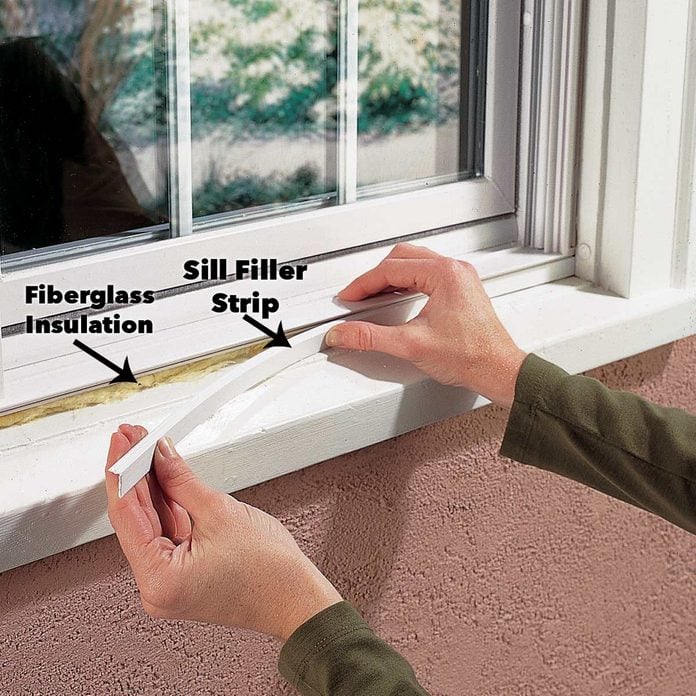
Stuff fiberglass insulation in the gap under the sill of the new vinyl window. Measure the size of the gap and cut the vinyl filler strip to fit. Use a sharp utility knife and straightedge or tin snips to cut the vinyl. Press the filler into place.
Step 15
Caulk
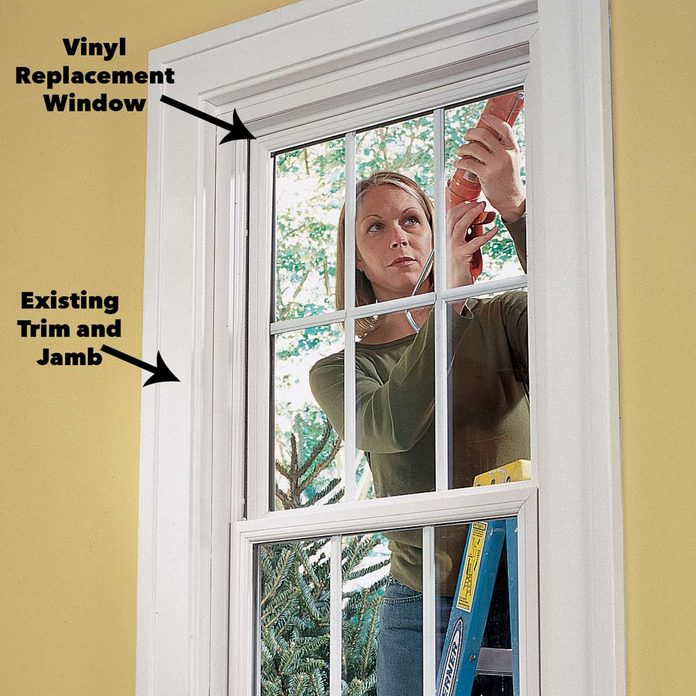
Caulk the joint between the new window and the blind stop and between the windowsill and filler strip using window and door caulk.
Step 16
Installing Double-Hung Sash Kits
The toughest part of sash replacement is tearing out the old window. You have to pry off the stop (carefully for reuse) and the parting stop (which you can discard). You can either nail or screw the new liner clips in place. We chose screws because driving nails can be difficult in old window jambs.
Step 17
Determine the Bottom Angle of the Sash

Align the edge of a heavy piece of paper with the window stop and fold the bottom to match the angle of the sill.
Step 18
Figure B: Find the Sill Angle
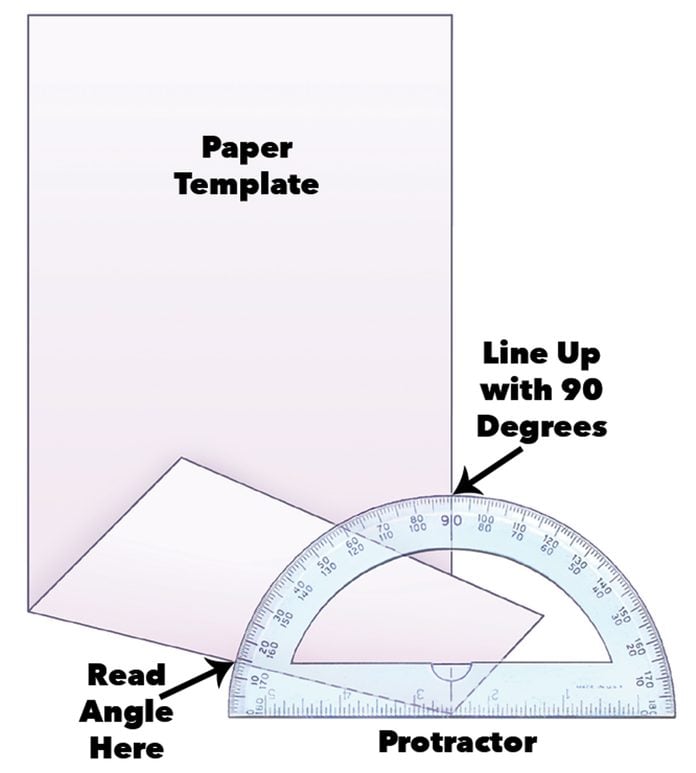
Lay a protractor on the folded paper to determine the angle. Then measure the interior height and width of the window frame. Use these measurements to order your sash replacement kit.
Step 19
Remove the Lower Sash
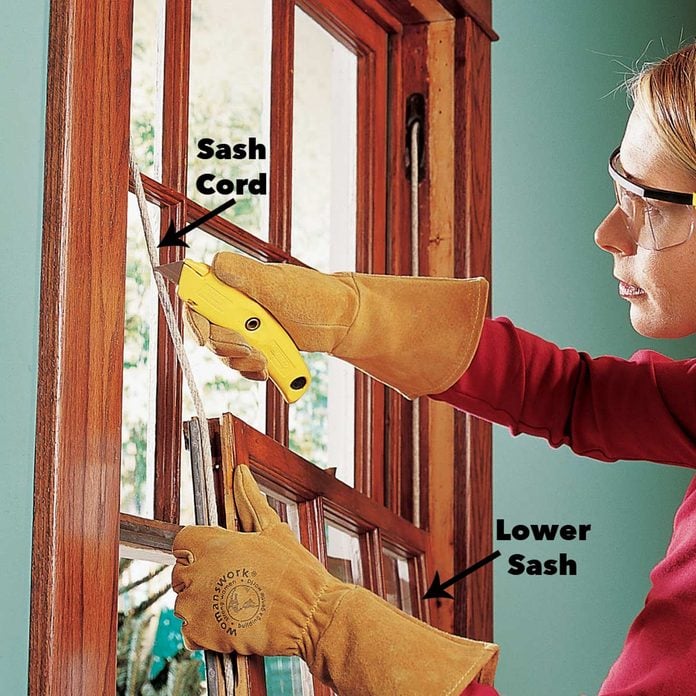
Remove the lower sash and cut the sash cords. If your window has weatherstripping or hardware other than sash cords, pry out or unscrew these to remove the sash.
Step 20
Remove the Parting Stop
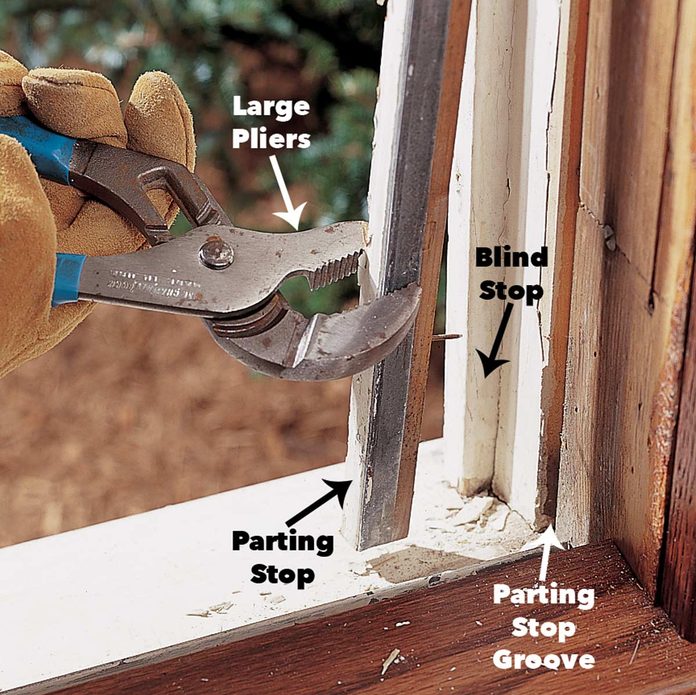
Pull or pry the parting stop from the groove in the window frame and discard it. Remove the top sash, cut the sash cords and take out the sash weight pulleys. Remove the sash weight cover and weights. Stuff the cavity with fiberglass insulation.
Step 21
Attach Jamb Liner Clips

You can either nail or screw the new liner clips in place. We chose screws because driving nails can be difficult in old window jambs. Screw the jamb liner clips to the jamb with No. 6 x 3/4-in. pan head screws. Position clips about 4 in. from the top and bottom and distribute the remaining clips evenly between them. Make sure to leave a 1/16-in. space between the clips and the blind stop to allow space for the jamb liner to slide in.
Step 22
Place Jamb Liners

Snap jamb liners over the metal clips after installing the sash stops and gaskets according to the instructions included with your window. Align the jamb liner so its outside edge fits between the blind stop and the metal clips. If your jamb liner has a vinyl flap facing the outside, make sure it lays over the blind stop. Press firmly over each clip location until you hear or feel the liner snap onto the clips.
Step 23
Add Top Parting Stop
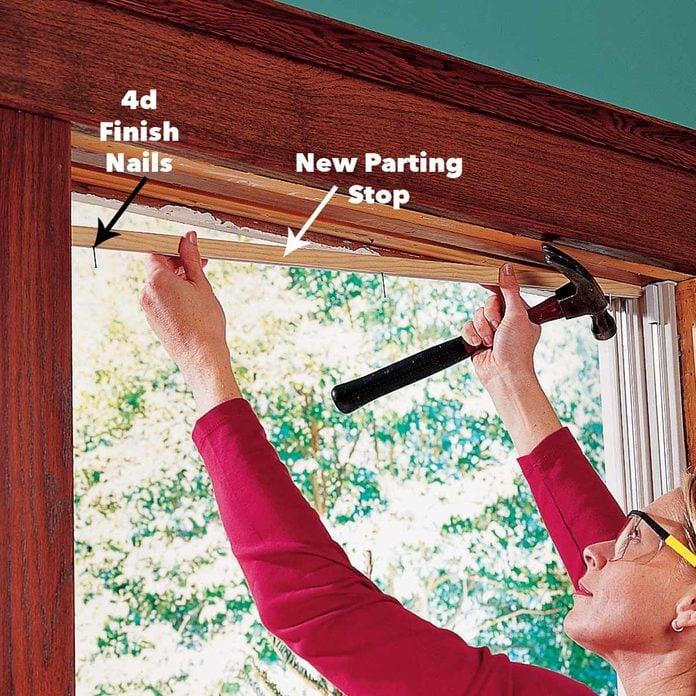
Slip the new parting stop into the groove in the top jamb with the weather-stripped edge facing the outside. Drill 1/16-in. pilot holes and nail the stop in place with three 4d finish nails. Replace the wood interior stops on the sides and top of the window and nail them in place with 4d finish nails.
Step 24
Position the Sash Lifts

Slide the sash lifts down to within about 10 in. of the windowsill. Press down firmly with a flat-blade screwdriver. Twist the screwdriver slightly from horizontal to slide the lifts. Then twist back to horizontal to engage the lifts in their new locations.
Caution: Release pressure slowly to make sure the clips are engaged before you remove the screwdriver completely.
Step 25
Install the Sash
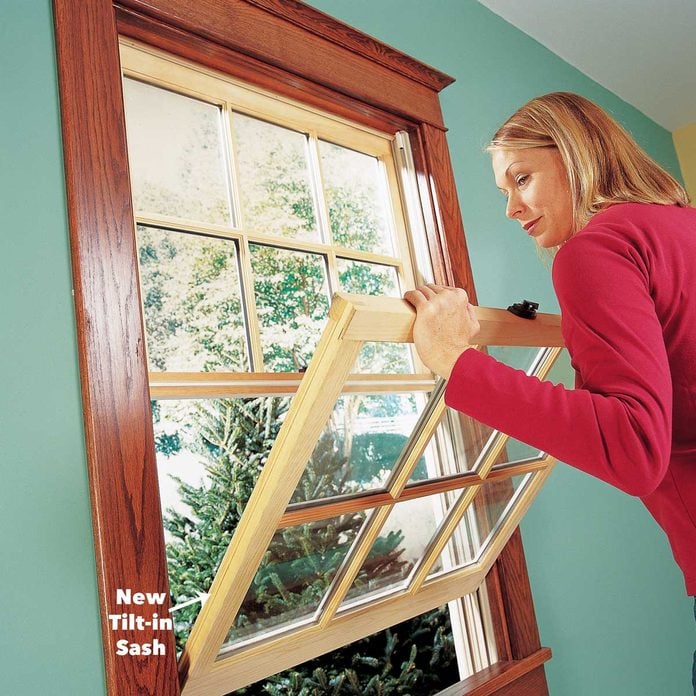
Hold the top sash with the exterior facing up and the metal cams away from you. Tilt the sash a little and align the metal pivots with the slots in the jamb liner closest to the exterior. Make sure the pivots are above the sash lifts. Tilt up the sash and press outward on the jamb liner while you snap the top of the sash into place between the jamb liners. Slide the sash down until the metal cams contact the sash lifts. Repeat the process on the lower sash. If you have trouble pushing in the sash after you tilt it up, try working with one side at a time.
How do you decide whether to repair or replace your old windows? Check out these FAQs about buying new windows.
How to Install New Windows in Your House
Source: https://www.familyhandyman.com/project/how-to-install-replacement-windows/